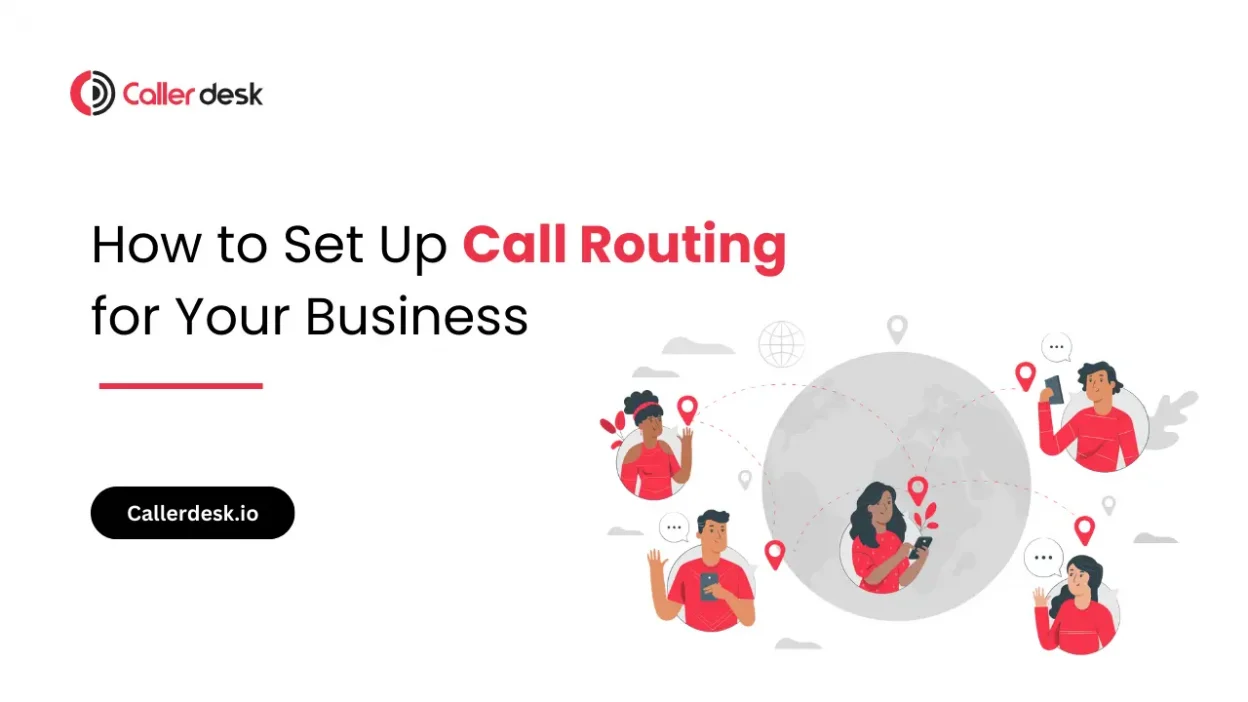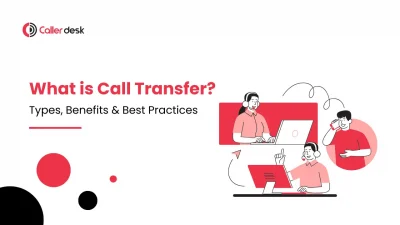Have you ever thought about how efficiently directing your customer calls could transform your business and boost customer satisfaction?
Efficient call routing can make a significant difference by ensuring that every call reaches the appropriate person swiftly and smoothly. Whether you’re running a call center or a business, setting up a good call routing system can really improve your performance.
In this blog, we will show you the key steps to set up call routing that fits your business needs, helping you boost customer satisfaction and streamline your communication processes.
Step-by-Step Guide to Setting Up Call Routing
1. Assess Your Needs
Identifying the specific requirements of your business is the first and most important step in setting up a call routing system. Consider the following factors:
- Call Volume: Estimate the number of incoming calls to determine the system’s capacity needs.
- Peak Times: Identify the busiest times of the day or week to ensure the system can handle high call traffic.
- Agent Skill Set: Understand the skills and expertise of your agents to implement effective skill-based routing.
2. Choose the Right Call Routing System
Selecting the appropriate call routing system that aligns with your business needs is essential. Here are the main options:
- On-Premise Solutions: Traditional systems installed on your premises. Suitable for businesses with existing infrastructure.
- Hosted PBX: External service providers manage the call routing, offering a balance between control and convenience.
- Cloud Telephony Systems: Highly scalable and flexible, ideal for modern businesses looking for advanced features and remote access capabilities.
3. Define Routing Rules
Setting up routing rules based on your chosen system and business requirements ensures efficient call handling. Examples include:
- Skill-Based Routing: Decide which skills are needed for handling different types of calls and direct calls to agents with those specific skills.
- Time-Based Routing: Create rules that direct calls based on the time of day or your business hours. For example, route calls to a different team after business hours.
- Geographic Routing: Route calls based on the caller’s location. For example, if a caller is from a specific region, the call is directed to an agent or department that handles that region.
4. Integrate with CRM
Integrating your call routing system with your Customer Relationship Management (CRM) software is important for providing a seamless and personalized customer experience. Here’s why it’s beneficial:
- Access to Customer Information: When a call comes in, agents can immediately see relevant information about the caller, such as their history, preferences, and any previous interactions. This allows agents to provide personalized and efficient service.
- Improved Efficiency: By having all the customer information readily available, agents can handle calls more quickly and effectively, reducing the time each call takes and streamlining the overall workflow.
5. Test the System
Before going live, thoroughly test the call routing system to ensure it works as expected. Steps for testing include:
- Conduct Test Calls: Simulate different call scenarios to check the accuracy of routing rules.
- Identify Issues: Detect and resolve any technical issues or misconfigurations.
- User Acceptance Testing: Involve a few agents to test the system in a real-world environment and provide feedback.
6. Train Your Staff
Training your staff on the new system is essential for its successful implementation. Effective training involves:
- Training Sessions: Conduct comprehensive training sessions to familiarize agents with the new call routing protocols.
- Resource Materials: Provide manuals, videos, and other resources for reference.
- Ongoing Support: Ensure continuous support and training to address any questions or challenges.
7. Monitor and Adjust
Regular monitoring and adjustments are necessary to maintain an efficient call routing system. Key actions include:
- Use Analytics: Use analytics and reporting technologies to monitor system performance and find areas for enhancement.
- Feedback Loop: Gather feedback from agents and customers to understand their experience.
- Continuous Improvement: Make necessary adjustments to routing rules and system settings to optimize performance.
Example Scenarios
Retail Store: A retail store may use call routing to direct consumer calls to the appropriate department. For instance, inquiries about product availability can be routed to the sales department, while questions about returns and exchanges can be directed to customer service. This ensures that customers get their queries addressed promptly, improving their overall experience.
IT Service Company: An IT service company can implement skill-based routing to ensure that technical support calls are handled by agents with the right expertise. For example, network-related issues can be routed to network specialists, while software troubleshooting calls can go to software experts. This leads to more quickly resolution times and increased customer satisfaction.
Latest Trends in Call Routing Technology
To keep your call routing system up-to-date, consider incorporating the latest trends in call routing technology. For example:
- AI-Powered Call Distribution: Utilize artificial intelligence to predict and direct calls to the best-suited agents based on call context and agent availability.
- Integration with Chatbots: Combine call routing with chatbots to handle routine inquiries, freeing up agents for more complex issues and improving overall efficiency.
Potential Drawbacks
One potential drawback of setting up a call routing system is the initial complexity and cost of implementation. It can require significant time and resources to assess your needs, choose the right system, and train your staff.
However, the long-term advantages greatly surpass the initial difficulties. An efficient call routing system improves customer satisfaction, enhances agent productivity, and streamlines communication processes. Investing in a robust call routing solution will pay off in the form of a more efficient and responsive business operation.
Conclusion
Setting up an efficient call routing system can transform how your business handles customer calls. By following the steps in this guide, you can make sure every call goes to the right person quickly and smoothly. This will make your customers happier and make your communication process more efficient. Whether you run a call center or any other business, having a good call routing system that fits your needs will improve your overall performance.





